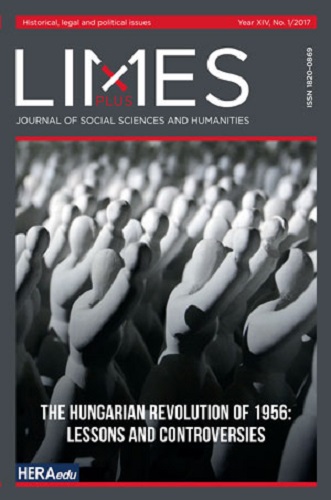Revolutions of 1848 And 1956 – Paradigm of Building the National Identity of Hungarians
Revolutions of 1848 And 1956 – Paradigm of Building the National Identity of Hungarians
Author(s): Goran VasinSubject(s): Political history, Social history, Nationalism Studies, 19th Century, Post-War period (1950 - 1989)
Published by: HESPERIAedu
Keywords: Revolution 1848; Revolution 1956; Hungary; national identity; Habsburg; Austro-Hungary; Trianon; Soviets; Imre Nagy
Summary/Abstract: The national identity of the Hungarians was built in several stages and several directions during the process of historical longevity. Firstly, it had been profiled through the anti-Ottoman and anti-Habsburg struggle; later on it was formed as unification of the territories under the Crown of St. Stephan, to receive later on anti-Russian and anti-Soviet features. The Revolutions of 1848/1849 and 1956 are particularly characteristic in this respect. The national defeats that followed the aforementioned Revolutions were consolidated by the anti-Habsburg and anti-Turkish tones / 1848 /, and especially anti-Soviet / 1956 /. Thus, the cult of freedom, national sacrifice and tragedy, which was dominant earlier too, has now been upgraded into one of the most important components of the contemporary national identity of Hungarians, particularly highlighted by the reflection of the events of the fall of the Berlin Wall and of Accession to the EU and NATO.
Journal: LIMESplus
- Issue Year: 2017
- Issue No: 1
- Page Range: 9-21
- Page Count: 13
- Language: English

